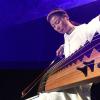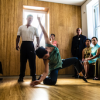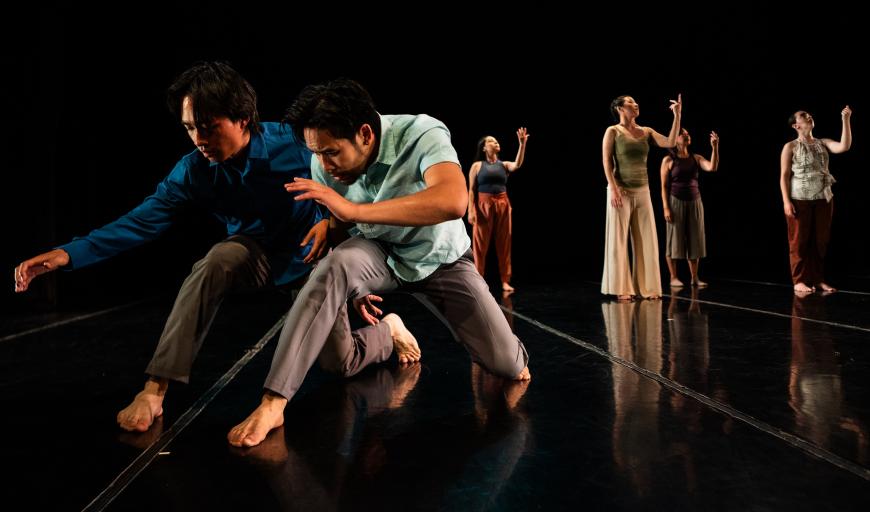
Lenora Lee Dance is celebrating its 15th anniversary with performances at Dance Mission Theater Feb. 2–4. Watching rehearsals of the two new pieces on the bill, In Visibility and Convergent Waves: EP, it’s apparent why Lee’s work is so important. In a refreshing shift of focus, there’s no room for the empty technical virtuosity found in so many dance troupes. The company members are much more focused on the emotional content as it relates to both themselves and the audience. Their bodies carry the depth and intensity of what it means to be an immigrant in today’s world. The tremendous amount of research Lee does, interviewing performers, community members, families, individuals, and organizers, yields a finished canvas of visual designs, music, spoken word, and movement.
“I really got into dancing when I was at City College of San Francisco,” Lee says, “and I was a science major. I started to take some dance classes and really enjoyed improvisation. At the same time, I started to study alto saxophone with Francis Wong, who is now a longtime collaborator.
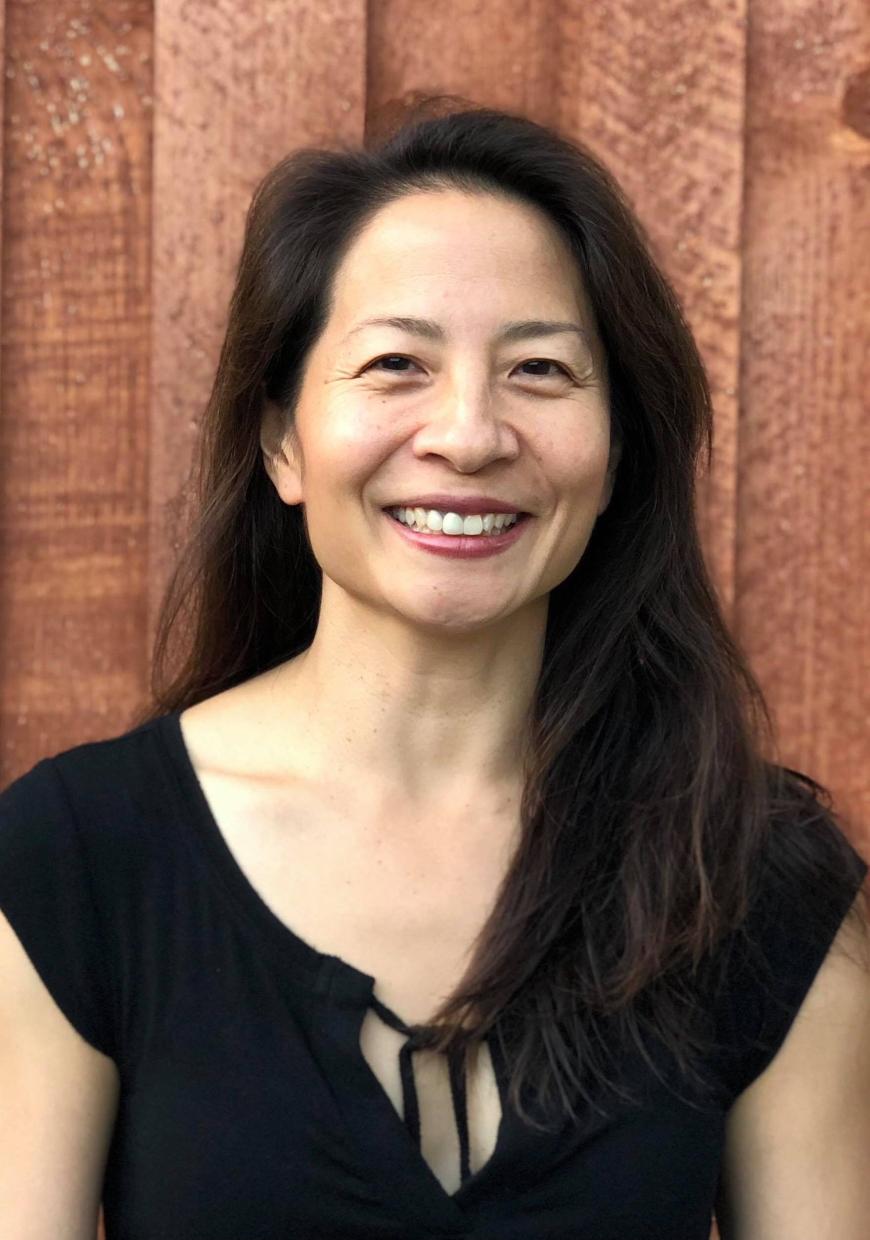
“The dance classes just opened up this world of communicating nonverbally, and it just felt much more like second nature or maybe even my first language that I just had to follow through, even though I didn’t have any family members who were artists. When I transferred to UCLA as a biochemistry major, I took dance classes at the same time, and I really felt like my teachers were encouraging us to really do a lot of exploration movement-wise of individuals and communities. It was really an eye-opening period, and I never turned back. Just changing my major from science to dance was the hardest, even with my parents’ support.”
The encouragement of Lee’s professors, who told her not to be afraid of bringing her own experiences into the studio, was key. “I grew up in the [San Francisco] Chinatown community,” Lee relates, “and this organization called the Donaldina Cameron House had good leadership programs. I feel like my foundation [as an artist] is really community-based. Almost everybody [in the U.S.] has some kind of family immigration story, whether it’s direct lineage, somebody that you’re married to, a cousin, or friends. We need to be sensitive to that, and eventually you will find a broader perspective.”
Lee went to study in China for a year, and during that time her maternal grandmother died. “I had an onslaught of regret not getting to know her better before, so I interviewed my mother and three sisters about my grandmother and created a solo with their thoughts about her as a composite person. And from there I started doing genealogical research on how my grandparents came over [to the U.S.]. That really was the impetus [for my work] toward the end of college. And I went to the National Archives, where I was able to dig up their immigration records.
“I just kind of kept going with that over the years, and in 2010 I did a larger piece [in San Francisco] called Passages.” Lee went on to create the deeply moving Within These Walls (2017), appropriately shown at the former immigration detention center on Angel Island, and later paired it with Dreams of Flight for a double bill in 2019 at the same location.
The soundscapes for Lee’s productions employ a many-layered approach and aren’t just about finding a piece of music to dance to. It all goes back to saxophonist Wong. “Pretty much he’s been my mentor all these years,” Lee says. “I have had the opportunity to work in different capacities with live music and with music recorded specifically for the choreography. Then, in the last few years, because of COVID and for other practical reasons, I’ve done a lot of research on [Wong’s] prerecorded music. So, I go back in, and I listen to what might feel pertinent for any given [dance work], and that’s how I selected the pieces [of music] here. We also are working with a vocalist, Helen Palma, and she’s the one that is singing a cappella at the very beginning [of the show].”
In terms of the choreography itself, Lee explains, “We work independent of the music. That’s just our way of making movement. We’re all creating together and teaching each other, so it’s very collaborative. Sometimes we did do some writing exercises at the beginning of this process, talking about our own family migration stories, and those stories generate movement.”
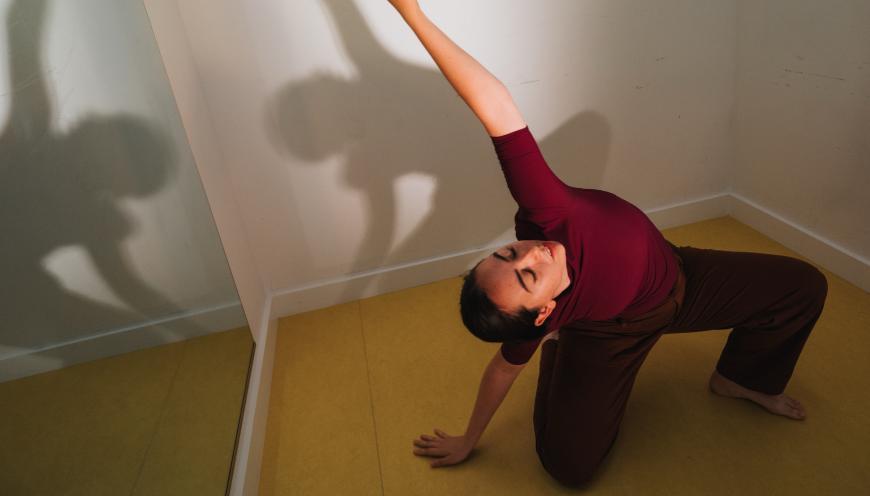
Lee is concurrently working on two other projects. One, Convergent Waves: NYC, will open Memorial Day weekend in New York City. It’s an immersive site-responsive performance on the South Street Seaport Museum’s 1885 tall ship Wavertree, inspired by the history of both the international cargo ship itself and the seaport as a neighborhood hub of international trade. The other is A Bridge to Now, a multimedia dance piece premiering in Lima, Peru, in September. It will also be shown in San Francisco in April 2025 and focus on Asian migration to North and South America and the impact of migrant communities in the Americas.
Unless you are 100 percent Native American, you and your ancestors were once immigrants in this country, and seeing Lenora Lee Dance in person might be just the thing to help you understand the impact immigration has had on all of us.



